Easily transform your kitchen scraps into a flavorful and nourishing Vegetable Broth that minimizes waste and maximizes taste. Beyond the regular vegetables, this easy broth recipe can utilize leftover vegetable peels, stems, and other odds and ends, turning them into a rich and aromatic base perfect for soups, stews, or risottos.
If you're looking for simple soups to use this in, try my ginger sweet potato carrot soup as well as my squash tahini soup.
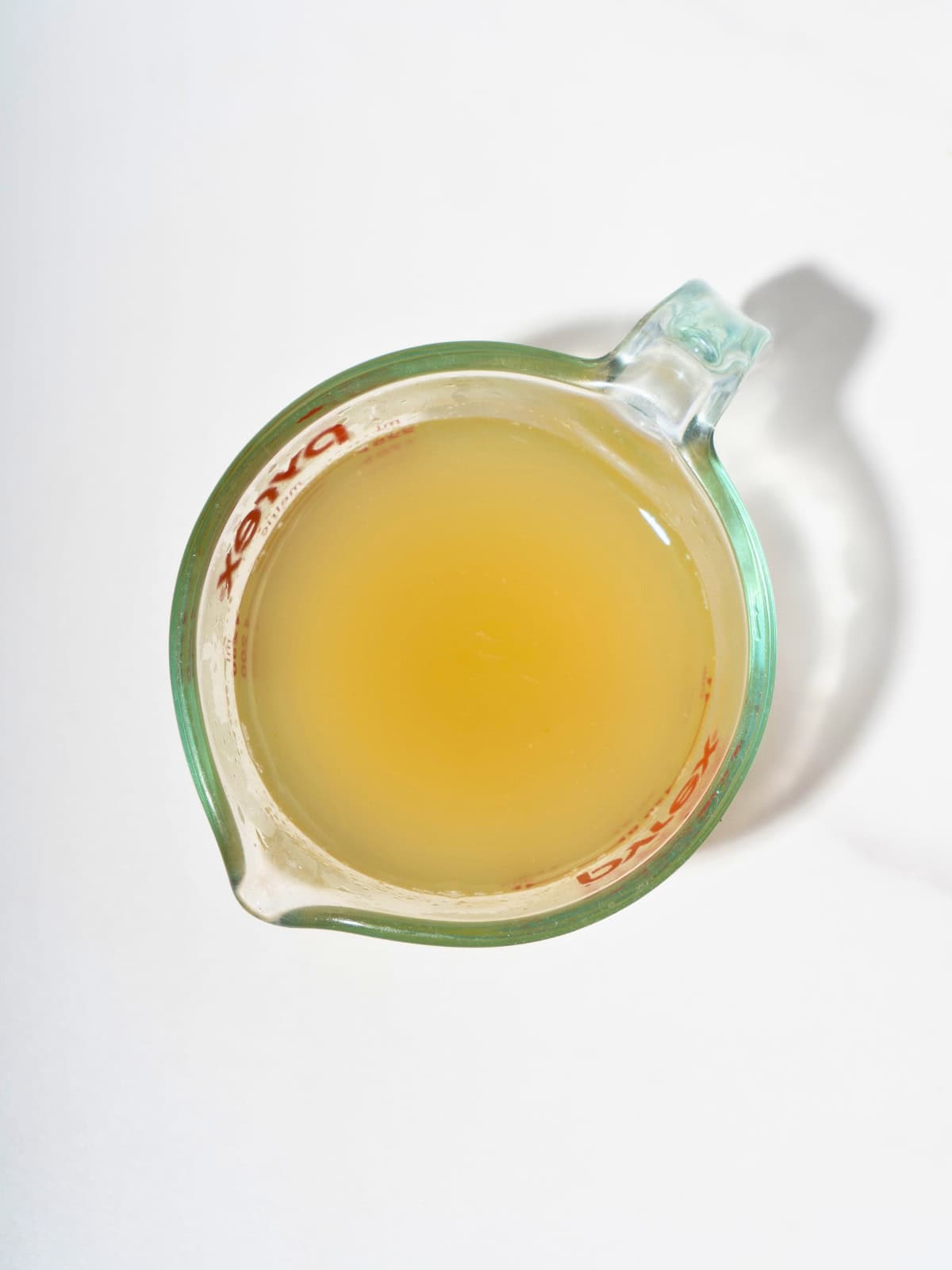
Jump to:
✔️ Why This Recipe is Great
Antihistamine Spices: between the garlic, onion, bay leaves, and thyme, this broth is packed with strongly antihistamine foods, meaning that they contain plant chemicals which inherently help your body calm histamine production and inflammation.
Low Histamine Soup Base: so many readers ask about low histamine soups, so this low histamine veggie broth is the base answer to that request.
Customizable Recipe: this recipe can be customized to your unique tolerances, and made with whatever veggie scraps you'll have on hand, not to mention frozen for months to use later on.
🥕 Ingredients
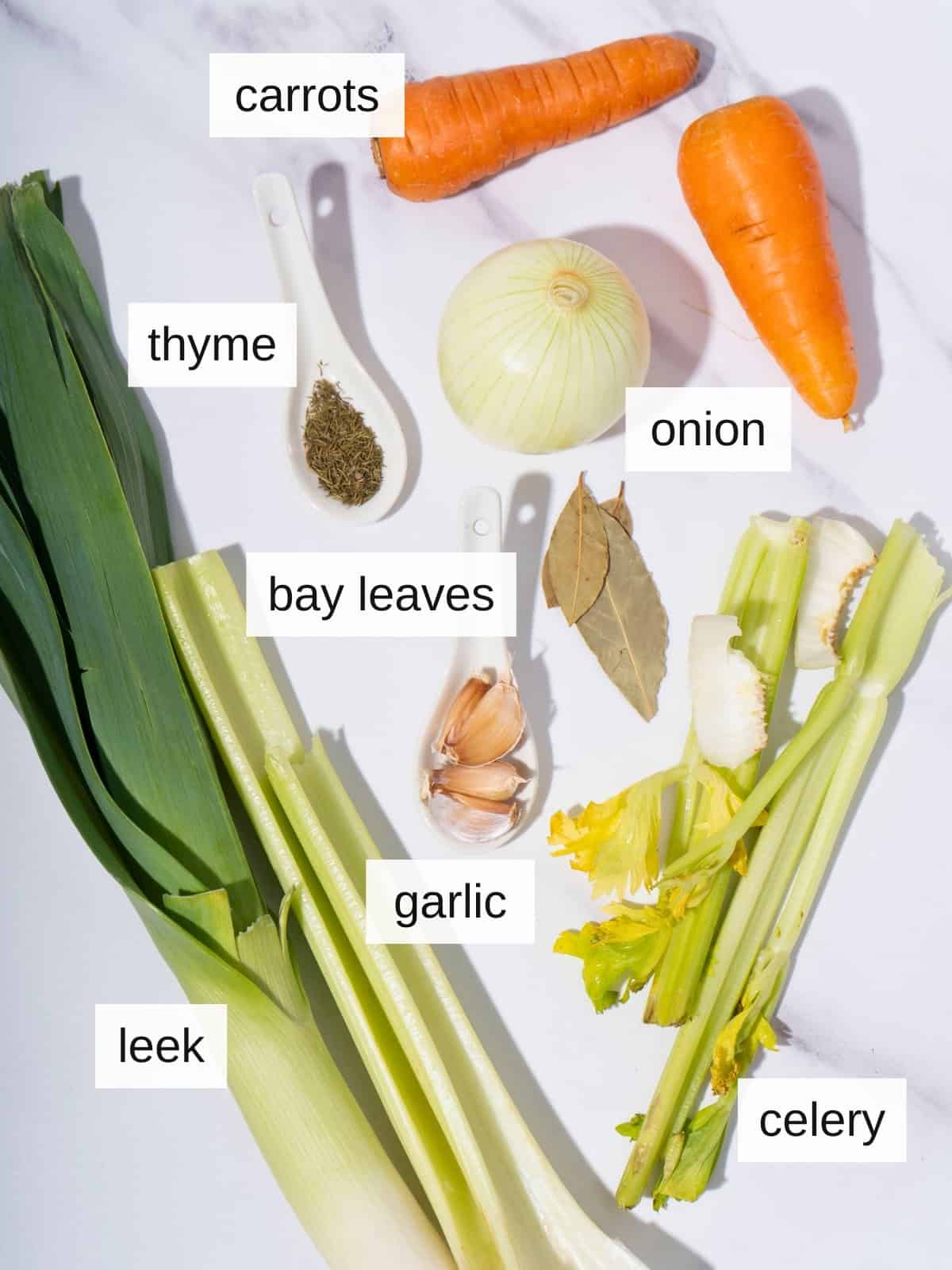
Carrots: this orange veggie is a great way to get your daily Vitamin A and fiber, and they're a great base for almost any low histamine dinner. In this case they need to be cleaned very well before you start making the broth, though frozen versions work just fine.
Celery Stalks: you can also use whole pieces of celery, but the stalks hold a ton of flavor.
Onion: you'll want to cut this in small pieces before mixing it with the vegetables; you can use any type of onion you have on hand, but the purple variety has more antioxidants.
Leek: these alliums are a great way of adding flavor to broth, not to mention a great source of antioxidants.
Raw Garlic: when chopped or sliced, this adds a bite of umami and sharpness to the broth, as well as strongly antibacterial properties.
Spices: my low histamine spice blend includes bay leaves and dried thyme, all of which come together as a flavorful complement to the homemade vegetable broth.
See recipe card for exact ingredients and quantities.
📝 Substitutions & Variations
While you can use any blend of vegetables you'd like, I'd highly recommend including at least one of each of the following to make for a well-rounded vegetable broth. Also consider roasting your vegetable scraps before simmering to deepen the flavor, though this won't work for some scraps. This adds a rich, caramelized taste to the broth.
- Aromatic Vegetables - onion, shallot, leeks, and garlic
- Root Vegetables - carrots, parsnips, rutabagas, sweet potatoes, celeriac
- Celery Family - fennel, celery root
- Green Vegetables - kale, swiss chard
- Herbs & Spices - parsley, thyme, oregano, dill, bay leaves, sage, paprika, cilantro, hibiscus
🧄 How to Make Vegetable Broth (Step-by-Step)
Step 1) Gather any vegetable scraps! If you’ve been saving peels, tops, and ends from your carrots, celery, onions, and leeks, you can toss those in for extra flavor. Just make sure they’re clean and free of any spoilage or dirt (image 1).
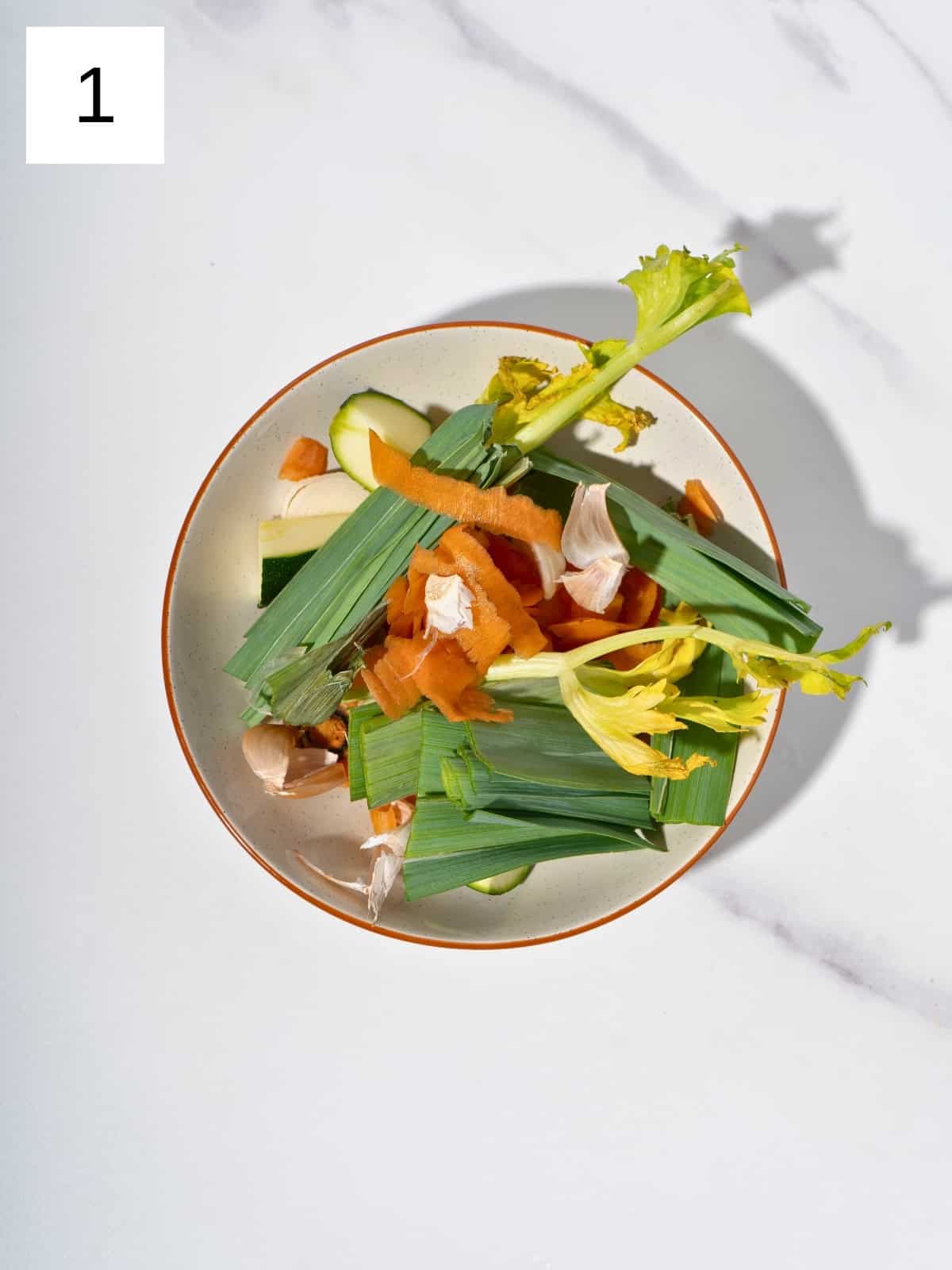
Step 2) In a large pot, combine the chopped carrots, celery, onion, leek, smashed garlic, and any scraps you’ve collected (image 2).

Step 3) Pour in the water, making sure all the veggies are submerged, then add the salt, dried thyme, bay leaves, and if you're using them, the paprika and hibiscus leaves (image 3).
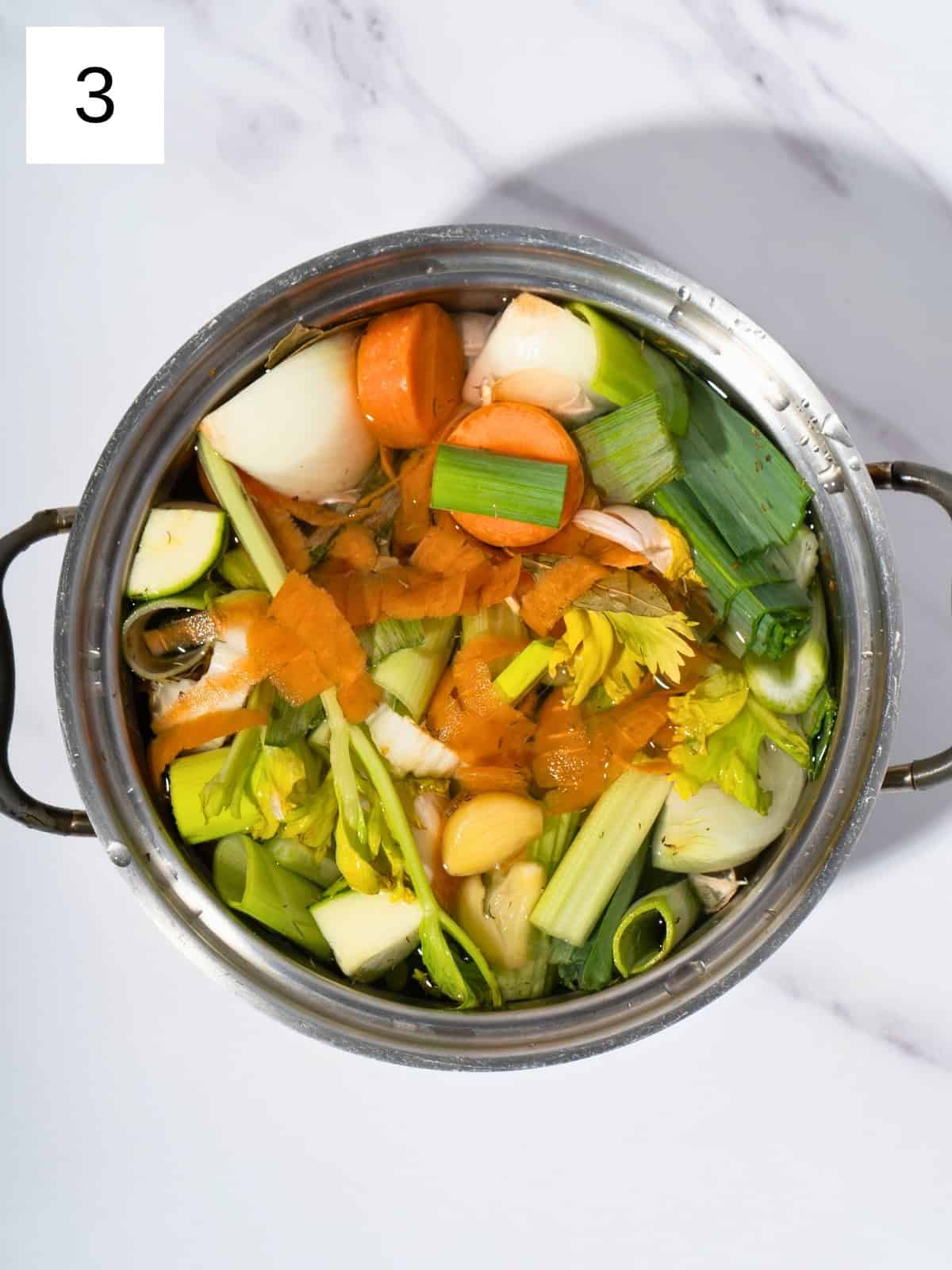
Step 4) Bring the mixture to a boil over medium-high heat. Once boiling, reduce the heat to low and let it simmer uncovered for about 45 minutes. This allows all those lovely flavors to meld together.
Step 5) After simmering, remove the pot from heat and let it cool slightly (image 4).
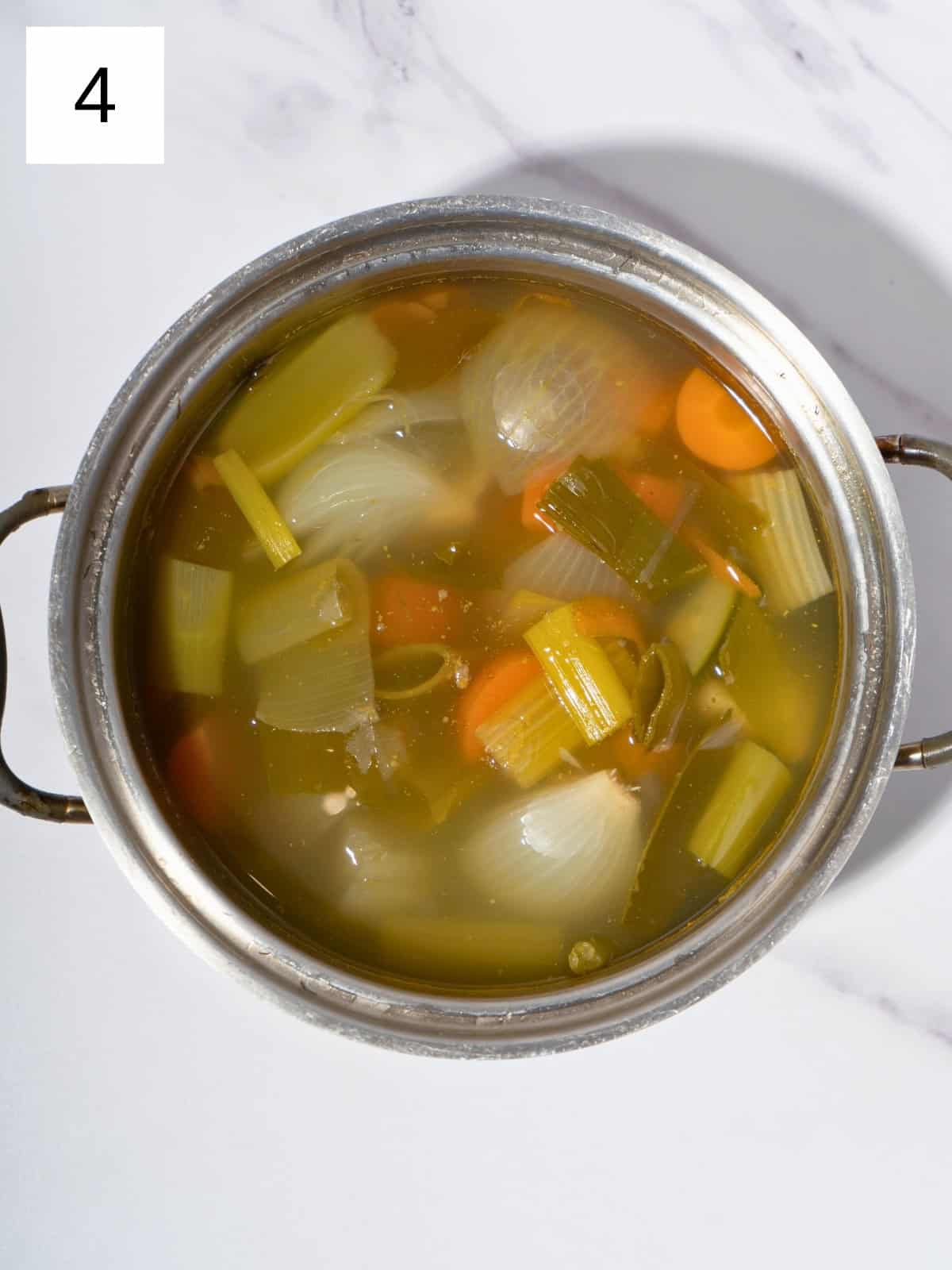
Step 6) Then strain the broth through a fine-mesh sieve or cheesecloth into another pot or large bowl, discarding the solids.
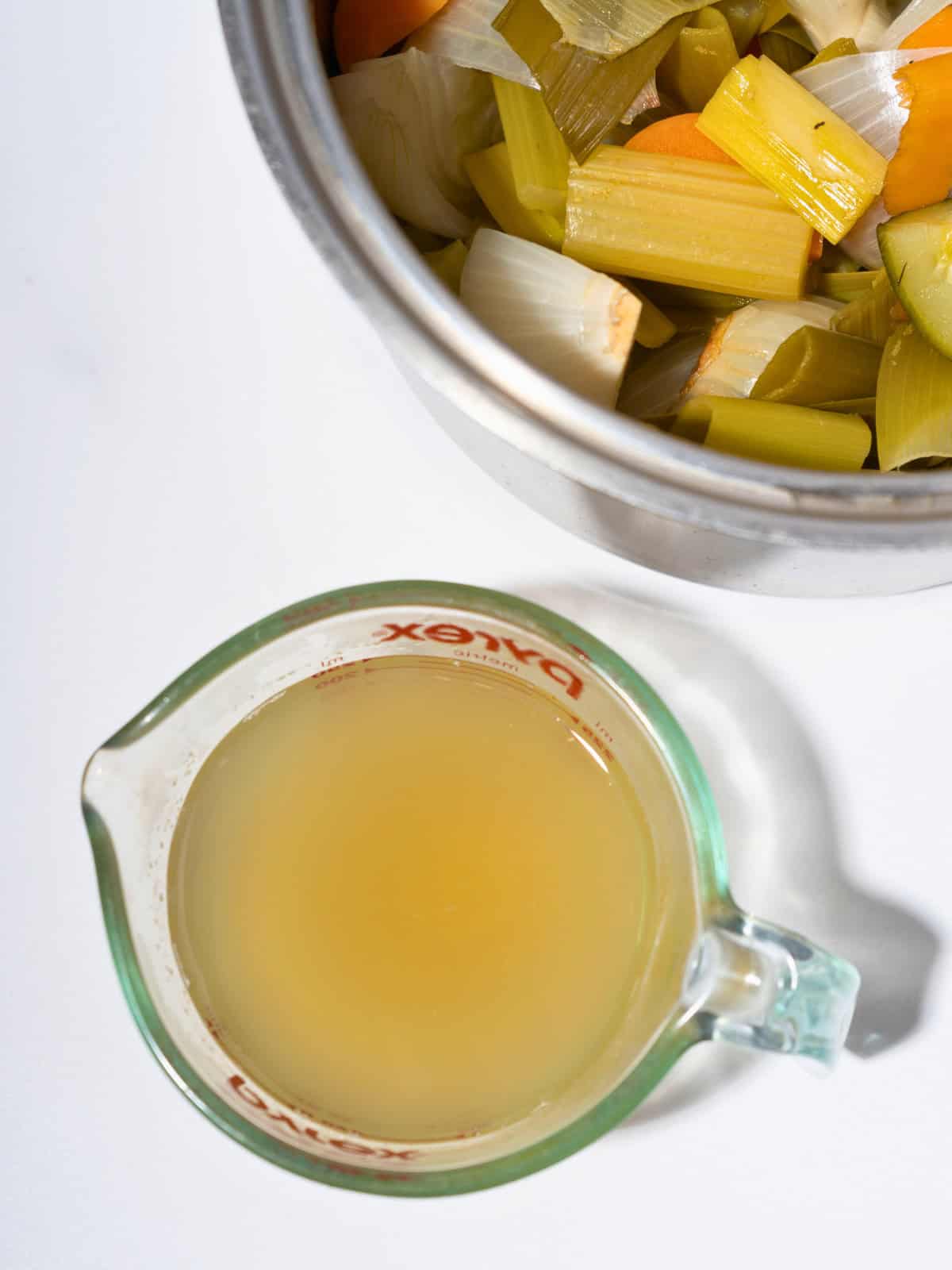
Step 7) Taste your broth and adjust the seasoning if needed. If you want a stronger flavor, you can simmer it a bit longer, then let the broth cool completely before transferring it to jars or containers for storage. It can be refrigerated for up to a week, or frozen for up to six months (the low histamine option).
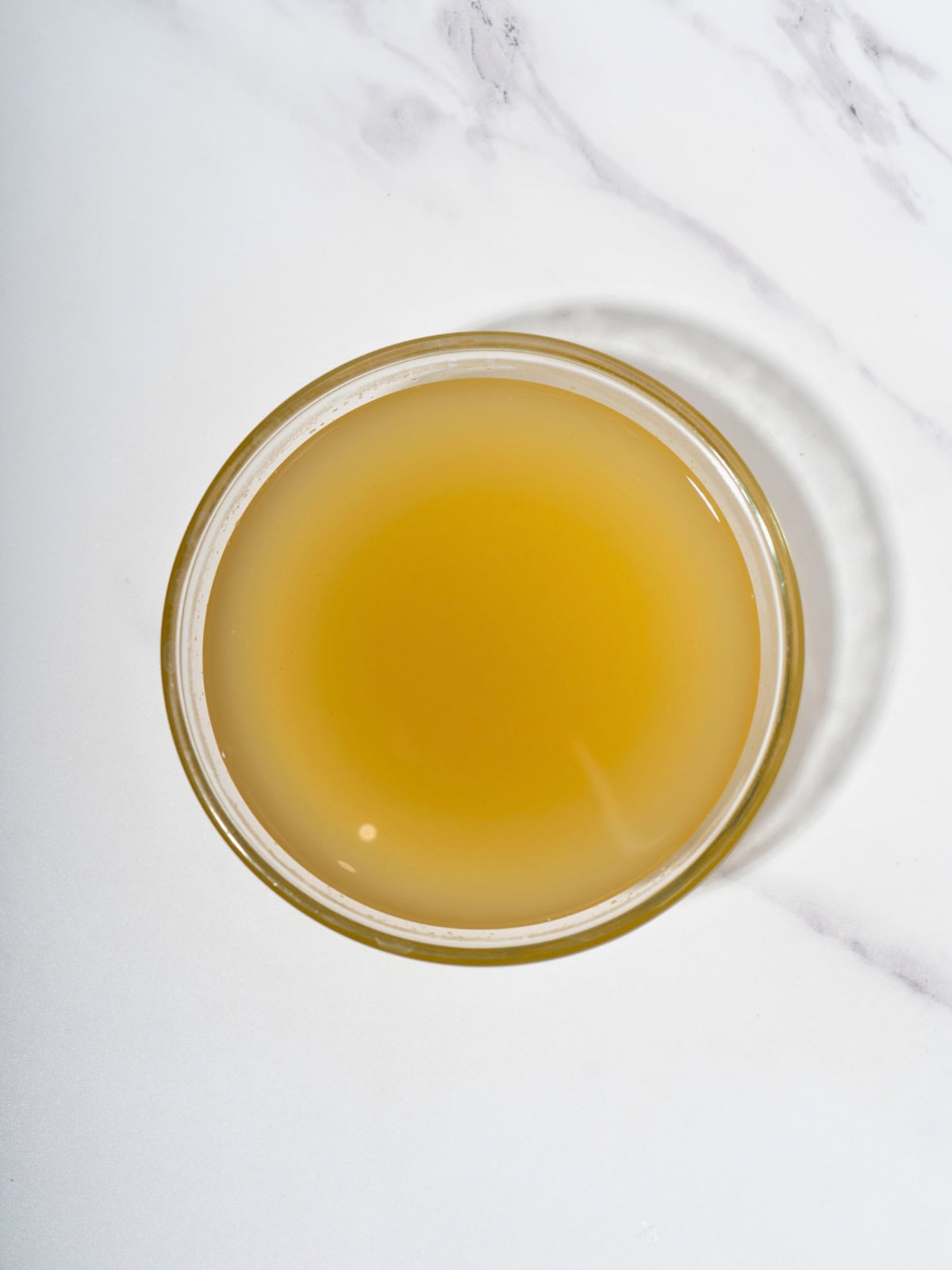
🧊 Freezing and Storage
To freeze this vegetable broth, portion it into air-tight containers and keep frozen for up to 6 months, ideally in single 1-cup servings to avoid refreezing it as you break off chunks to reheat.
Thankfully, even if it's been awhile since it was frozen, this broth will reheat quickly. Simply put the broth into a pot or bowl and reheat for a few minutes over medium-low heat on the stovetop, or in the microwave on medium power for 1 ½ to 2 minutes.
👨🏻🍳 Expert Notes & Tips
Using Other Veggies: Feel free to customize your broth with any other vegetable scraps you have on hand, like green onions, bell peppers, or herbs.
How to Enjoy: This broth is perfect as a base for soups, stews, or risottos. You can also sip it on its own for a comforting drink!
Make it Fresh: If you don’t have enough scraps, you can still make a delicious broth using fresh veggies.
Adding Extra Flavor: Adjust the salt level and blend of herbs based on your personal preference or what you have available.
❓ What to Make With Vegetable Broth
🙋 Frequently Asked Questions
Absolutely! Freezing vegetable scraps is a great way to save them for later. Just make sure to use them within a few months for the best flavor.
It's best to keep the broth unsalted during cooking, which allows you to control the saltiness when using the broth in other recipes - you can always add salt later as needed.
While scraps are great, you can make broth using whole vegetables as well. Just chop them up and follow the same simmering process.
Homemade broth allows you to control the ingredients and avoid preservatives or excessive sodium found in some store-bought versions, making it a healthier option.
📖 Recipe

Vegetable Broth (From Scraps)
Ingredients
- 2 medium carrots about 200g, including any well-scrubbed peels, chopped into large pieces
- 2 stalks celery about 100g, chopped into large pieces
- 1 medium onion about 150g, quartered
- 1 leek about 150g, cleaned and chopped into large pieces
- 4 cloves garlic smashed
- 10 cups water about 2.4 liters
- 1 teaspoon salt adjust to taste
- 1 teaspoon dried thyme
- 2 bay leaves
- 1 teaspoon paprika optional, for a bit of warmth
- 2-3 hibiscus flowers optional, for a hint of tartness and color
Instructions
- Gather any vegetable scraps! If you’ve been saving peels, tops, and ends from your carrots, celery, onions, and leeks, you can toss those in for extra flavor. Just make sure they’re clean and free of any spoilage or dirt.
- In a large pot, combine the chopped carrots, celery, onion, leek, smashed garlic, and any scraps you’ve collected.
- Pour in the water, making sure all the veggies are submerged, then add the salt, dried thyme, bay leaves, and if you're using them, the paprika and hibiscus leaves.
- Bring the mixture to a boil over medium-high heat. Once boiling, reduce the heat to low and let it simmer uncovered for about 45 minutes to an hour. This allows all those lovely flavors to meld together.
- After simmering, remove the pot from heat and let it cool slightly.
- Then strain the broth through a fine-mesh sieve or cheesecloth into another pot or large bowl, discarding the solids.
- Taste your broth and adjust the seasoning if needed. If you want a stronger flavor, you can simmer it a bit longer. Then let the broth cool completely before transferring it to jars or containers for storage. It can be refrigerated for up to a week, or frozen for up to six months (the low histamine option).



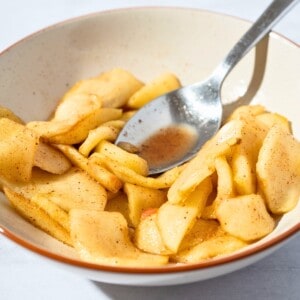
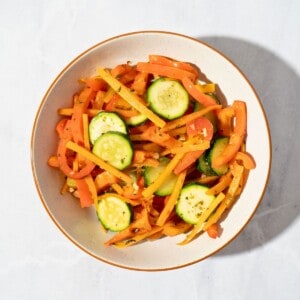


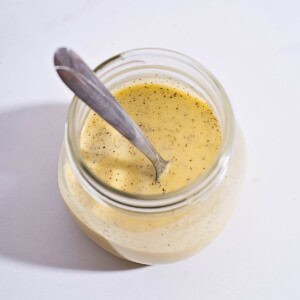
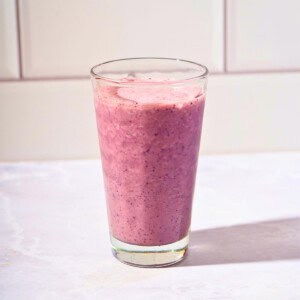

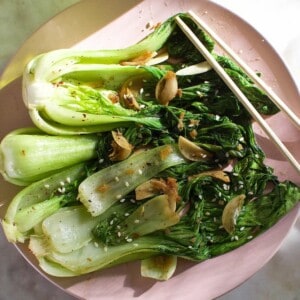


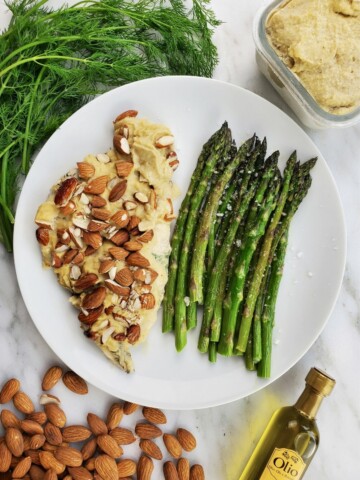

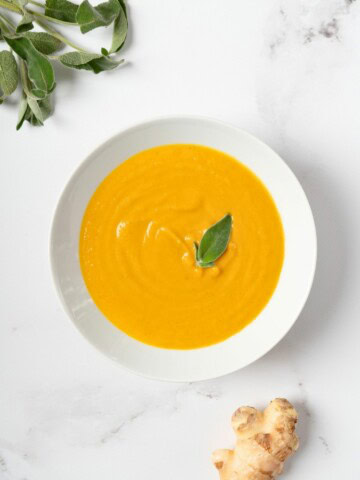
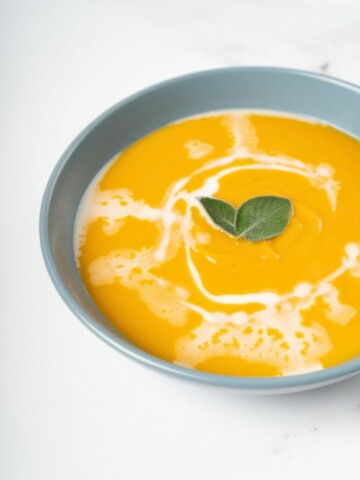

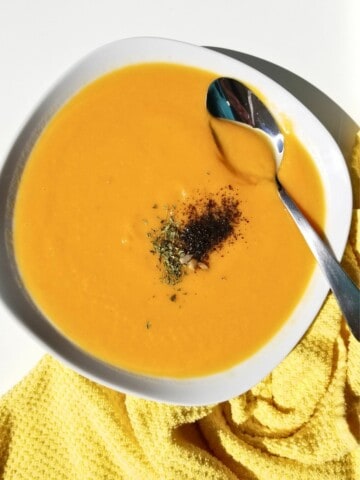


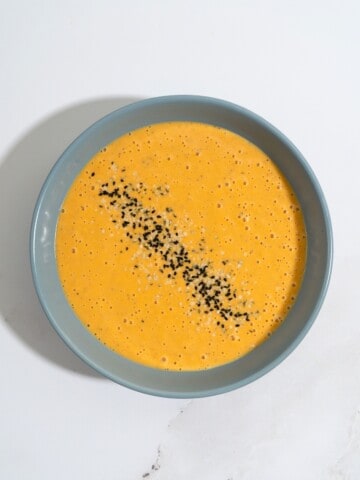
Comments
No Comments